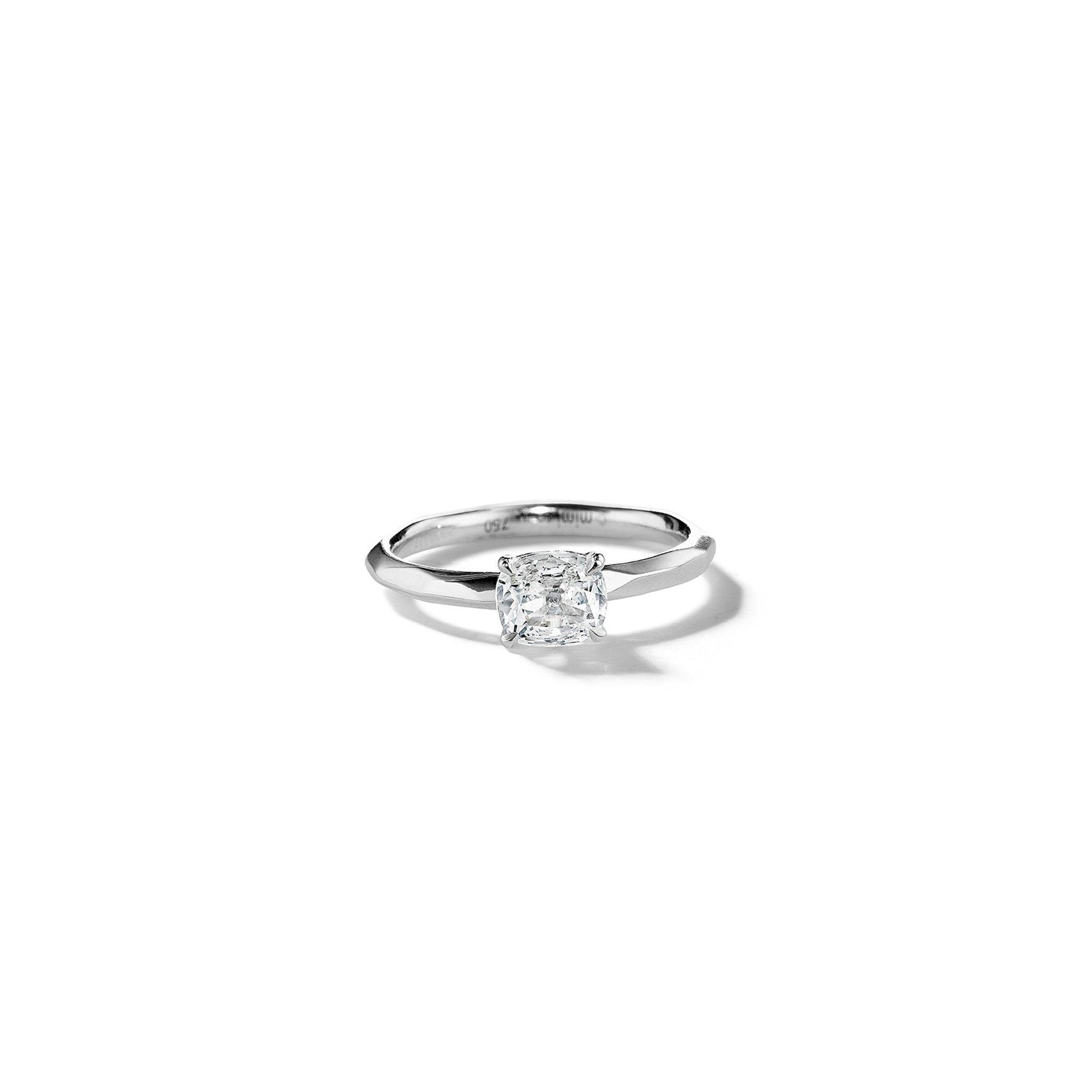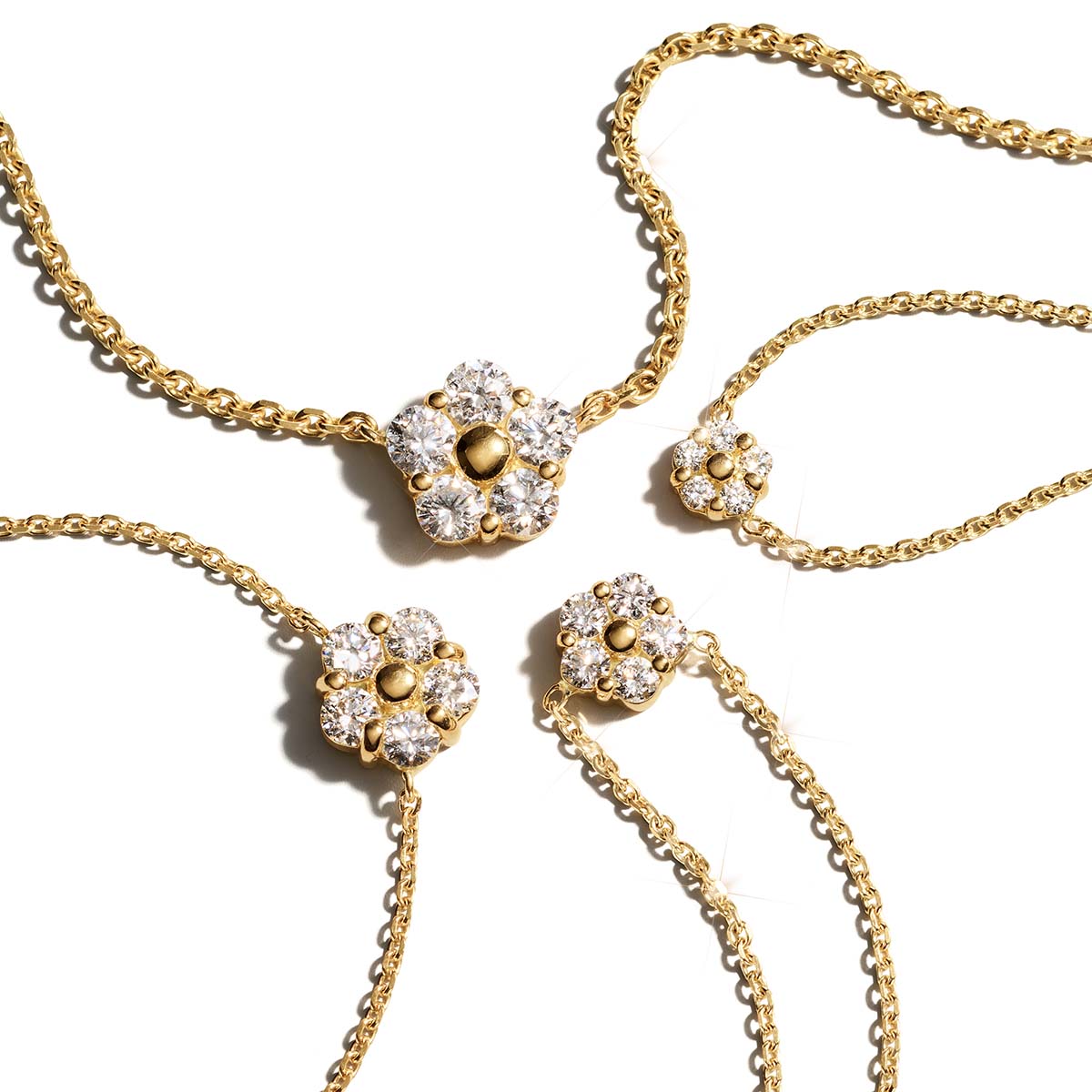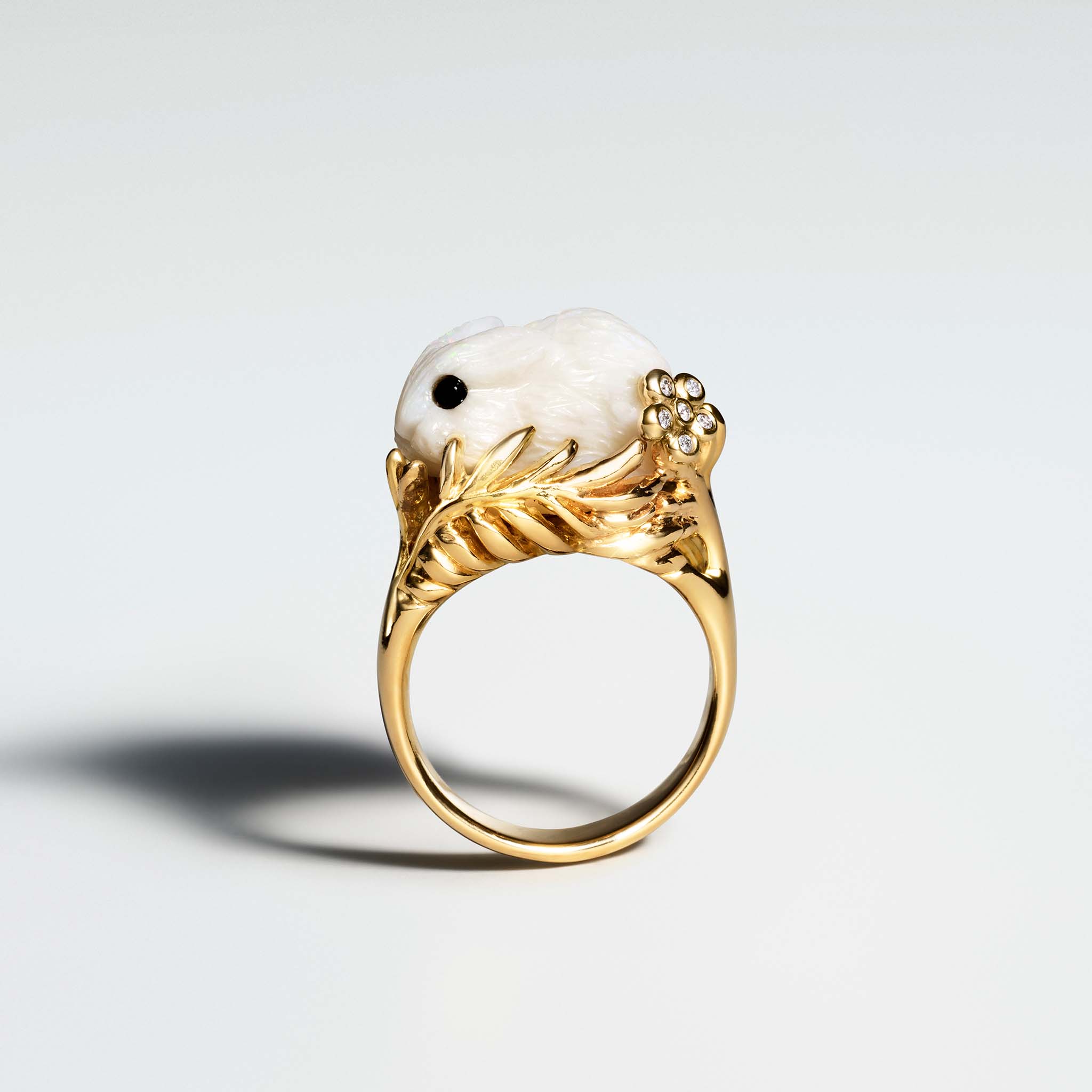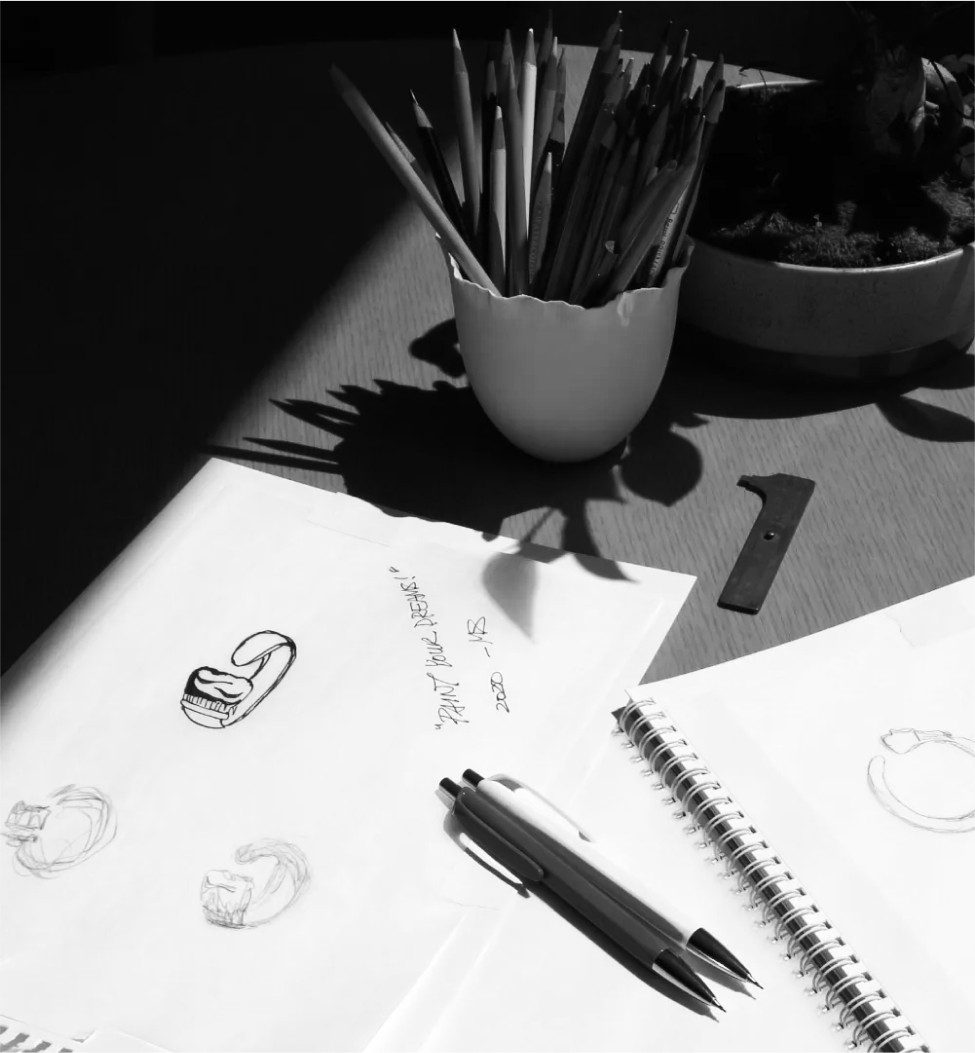Diamond Clarity Glossary
Learn about diamond clarity—the presence of internal and external characteristics within a diamond. This guide explains how clarity grades are determined and how inclusions and blemishes can affect a diamond's beauty and value.
Diamond Clarity Explained | Grades, Inclusions & What to Know
Diamond clarity refers to how free a diamond is from internal inclusions and external blemishes. It is one of the 4 Cs of diamond quality (along with cut, color, and carat) and plays a key role in determining a diamond’s brilliance, rarity, and value.
This glossary breaks down everything you need to know about diamond clarity — including how it’s graded, what to look for, and how to choose the right clarity for your needs.
What Is Diamond Clarity?
Diamond clarity measures the number, size, type, and visibility of natural imperfections — called inclusions (internal) and blemishes (external) — within a diamond.
All diamonds are formed under immense heat and pressure, and almost all have some clarity characteristics. These markings are nature’s fingerprint, making each diamond unique.
Clarity doesn’t affect structural integrity in most cases, but it can influence brilliance and value, especially in larger stones.
How Is Diamond Clarity Graded?
Clarity is graded using 10x magnification by trained gemologists, typically using the GIA (Gemological Institute of America) scale — the industry standard.
Clarity grades are based on:
- Number of inclusions/blemishes
- Size and location of the clarity characteristics
- Color and relief (contrast)
- Visibility to the naked eye and under magnification
Diamond Clarity Grades (GIA Scale)
Here’s a breakdown of each clarity grade, from flawless to included:
FL – Flawless
No inclusions or blemishes visible under 10x magnification. This grade is extremely rare and expensive, making it perfect for collectors and investment-grade stones.
IF – Internally Flawless
No inclusions, only minor surface blemishes. These stones have exceptional clarity and are virtually identical to FL in visual appearance.
VVS1 & VVS2 – Very, Very Slightly Included
Minute inclusions that are extremely difficult to detect even under magnification. These high-clarity stones are often eye-clean and offer excellent value for those seeking a near-flawless look.
VS1 & VS2 – Very Slightly Included
Minor inclusions that are hard to see under 10x magnification. Diamonds in this popular clarity range are eye-clean in most cases and balance quality with budget.
SI1 & SI2 – Slightly Included
Inclusions are noticeable under magnification and sometimes visible to the naked eye (especially in SI2). With the right cut and setting, these stones can still be beautiful and are a budget-friendly option without a major visual compromise.
I1, I2, I3 – Included
Inclusions are easily seen with the naked eye. These stones may impact transparency, brilliance, and durability, and are generally not used in fine jewelry.
Common Types of Inclusions
Each type of inclusion affects clarity differently. Here are a few common ones:
- Feathers: Small internal cracks
- Clouds: Groups of tiny pinpoints
- Crystals or minerals: Foreign particles trapped inside
- Needles: Long, thin inclusions
- Cavities: Holes or deep blemishes on the surface
- Twinning wisps: Growth patterns within the diamond
Some inclusions are harmless, while others may affect sparkle or durability depending on their location.
Eye-Clean Diamonds
An eye-clean diamond is one where inclusions are not visible to the naked eye from a normal viewing distance. Many diamonds graded VS2 or even SI1 can appear eye-clean, offering excellent value without the price premium of higher grades.
Choosing the Right Diamond Clarity
Choosing a clarity grade depends on:
- Personal preference
- Size of the diamond (larger diamonds show inclusions more)
- Type of setting (prongs or bezels can hide flaws)
- Budget
For most buyers, VS2 or SI1 diamonds offer the best balance between quality and cost.
FAQs
The best clarity is Flawless (FL), but it’s extremely rare and expensive. Most people choose diamonds in the VS or SI range for beauty and value.
Yes, but to a lesser degree than cut. Poor clarity (especially in I1-I3) can disrupt light performance and dull the diamond.
For most people, the goal is to find an "eye-clean" diamond, meaning no inclusions are visible to the naked eye. A diamond's clarity is not only a measure of its visible appearance but also a reflection of its quality and rarity. For the most discerning customers, the ideal choice is a diamond in the VS (Very Slightly Included) or VVS (Very, Very Slightly Included) clarity grades.
The VS range is often considered the perfect balance, as these diamonds are almost always eye-clean, offering exceptional beauty and quality at a compelling value.
Here are the key clarity grades to consider and why:
- VS1 or VS2 (Very Slightly Included): This is often considered the sweet spot for an engagement ring. These diamonds are almost always "eye-clean" and provide a beautiful, high-quality appearance without the high cost of the VVS or Flawless grades. This is where you get the most value for your money.
- SI1 (Slightly Included): Many SI1 diamonds are also "eye-clean" and can represent an excellent value. However, the specific location and type of inclusion become more important. It is highly recommended to examine the diamond's clarity plot on its grading report or view a high-resolution image to ensure the inclusion is not in a highly visible spot, such as the center of the diamond.
- VVS1 or VVS2 (Very, Very Slightly Included): If you have a larger budget and prioritize rarity and perfection, a VVS clarity diamond is an excellent choice. This is also the point where investment and resale value start to become a more significant factor. You can be completely confident it will be eye-clean.
Yes. Lab-grown diamonds follow the same GIA clarity grading scale as mined diamonds, and also exhibit natural inclusions or growth patterns.
"Eye-clean" is a term used in the jewelry industry to describe a diamond that has no inclusions or blemishes visible to the unaided eye. A diamond is considered eye-clean when viewed face-up from about 6-12 inches away by someone with 20/20 vision under standard lighting conditions.
The clarity grades most likely to be eye-clean are:
VVS1 and VVS2: All diamonds in this range are eye-clean, as their inclusions are nearly impossible to see even under 10x magnification.
VS1 and VS2: Most diamonds in this range are eye-clean and offer a great balance of quality and value.
SI1: This is where you can find great value, but with more risk. Many SI1 diamonds are eye-clean, but it is not guaranteed. You must carefully inspect these diamonds to ensure any inclusions aren't visible to the naked eye.




